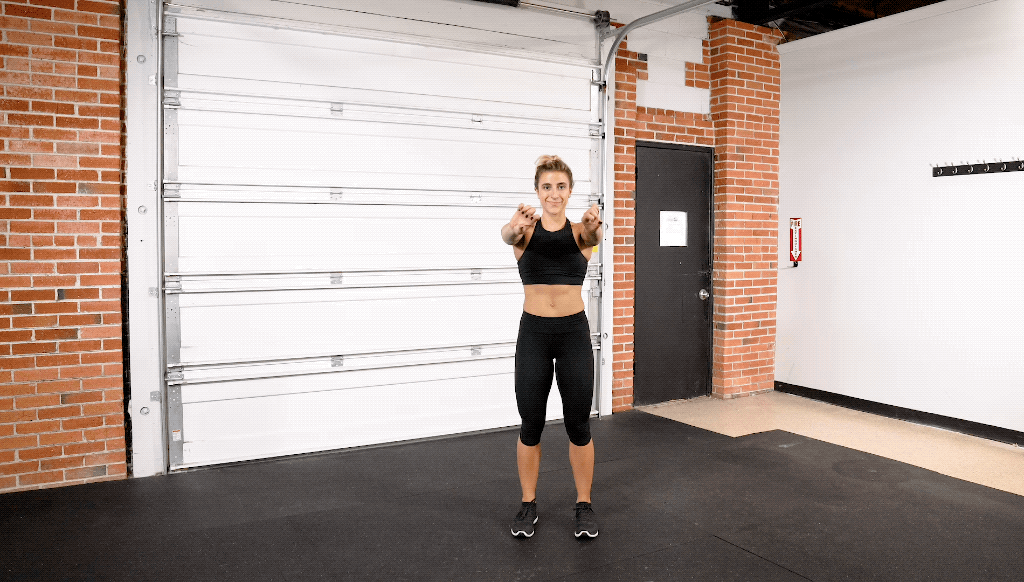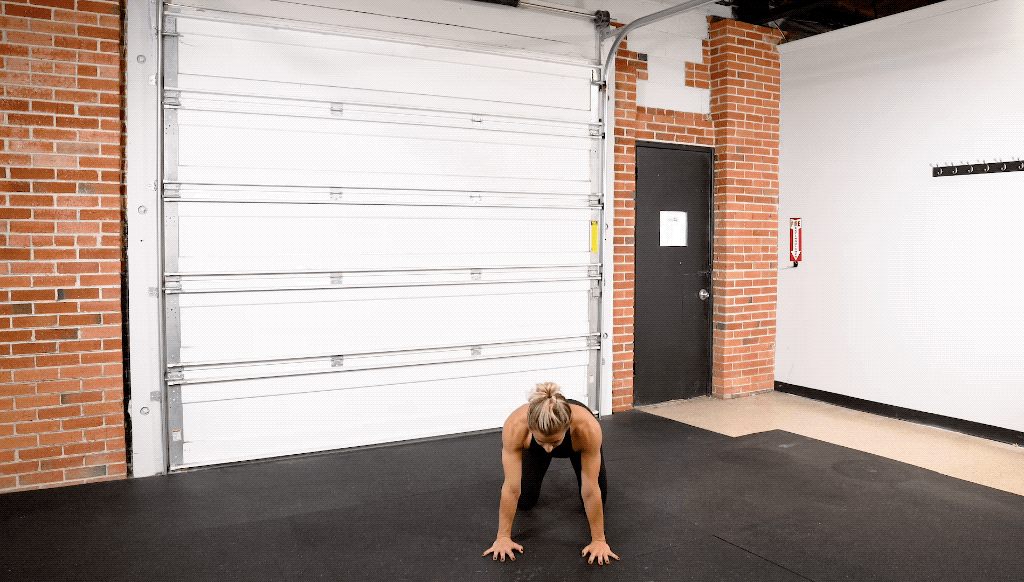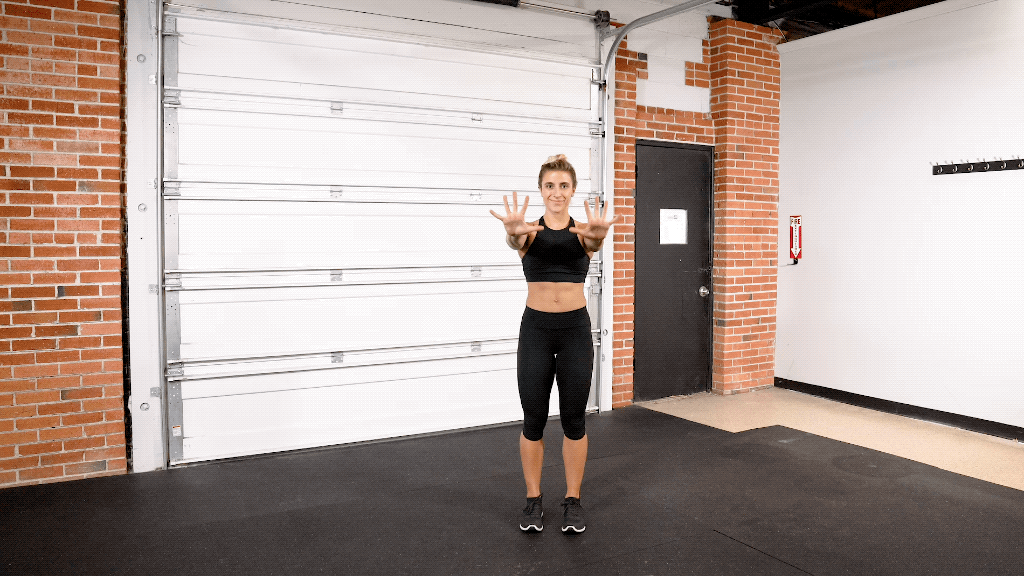3 Kettlebell Moves Everyone Should Know (And How to Progress like a Pro)
This weekend I flew to LA to earn my Kettlebell Specialist Certification from Onnit Academy. I was one of five women in the room.
If there is one thing I took from this weekend, it’s this: Even if you learn something once, it’s not a bad idea to go back and learn it again. This weekend was less about adding a certification to my toolbox and more about going back to the basics. There is so much form and technique that goes into kettlebells. This weekend was about 1) understanding all the small details that goes into working with this piece of equipment to make YOU feel more comfortable with it and 2) bringing back some fun moves to work into your workouts.
Kettlebells can be a great tool for full-body workouts
Because of the way the actual “bell” is shaped, it can be an effective tool for total body workouts. Within a single movement, such as a kettlebell swing, you will use several muscle groups. A kettlebell swing is a posterior movement (interpretation: it’s meant for your hamstrings and glutes) but you also have to activate your upper body—mainly your lats, shoulders, and core. Five muscle groups have to fire to complete one kettlebell swing, while a dumbbell move probably wouldn’t have the same effect. Make sense?
And while it’s a great tool, it’s also incredibly easy to use it incorrectly.
When it comes to kettlebells, I see a lot of incorrect form and technique. It’s easy to injure your wrists, shoulders, or low back, depending upon the exercise you’re performing. BUT, if you understand how to use kettlebells correctly, you can do some pretty cool shit without injuring yourself.
It’s not a bad idea to regress an exercise
You guys know me. You know I love to be upside down or drop down low into a pistol squat. These are complicated moves, and yea they look great on the ‘gram. But I want to let you in a little secret:
Sometimes, the best way perfect a complicated move is to regress the exercise. Here’s a little personal trainer language for you: progression is what you do when a move is too easy, i.e. moving from a bodyweight squat to a single leg squat, and eventually to a pistol squat. Most people assume progression is always the answer, and get frustrated when they can’t get to the end goal (the pistol squat).
In these cases, it’s best to regress the exercise, working your way back to the core movement and pinpointing where you went wrong. It’s like being in the sixth grade and trying to multiply fractions, when suddenly you realize you never understood fractions to begin with. Or, with a pistol squat, realizing you never quite perfected the bodyweight squat.
If you can’t get a grip on the kettlebell swing, you need to work your way back and figure out where your technique went wrong. With swings—or almost all kettlebell moves, really—chances are you went wrong at the hinge.
What on earth is “The Hinge”?
No, we’re not talking about the dating app.
The hinge is the foundation of most kettlebell movements, including the deadlift, clean, row, swing, clean, or snatch. If you ever worked with kettlebells, you probably heard the phrase, “hinge from your hips,” but it’s so, SO much more than that.
To hold weight (the kettlebell) in front of your body, you have to activate the back of the body. This is where the hinge comes in. The hinge involves your pelvis, butt, core, and shoulders. Here are a few mental cues I picked up this weekend to activate each of these parts of the body.
From a standing position, do the following:
To activate your shoulders, think of performing a superman: Pull your shoulders back and down so you engage your lats. Your lats are the major muscle group in many movements.
To turn your pelvis out, do the Instagram: Stick your booty out while keeping your chest lifted. You know—like you’re posing for the ‘gram.
To activate your glutes, press your ham to the back wall: Push your booty back toward the wall behind you, drawing your upper body down while keeping your chest up.
And of course, keep your core engaged: Brace yourself like I’m about to punch you in the stomach (yes, you).
Throughout the weekend, we focused on seven-to-eight movements, and almost all of them started with mastering the hinge.
3 basic kettlebell moves: Good mornings, squats, and press
Three of the basic movements are good mornings, squat, and press. Once you master these, you can advance to other, more complicated movements. You can progress a good morning to a swing or a deadlift. A press becomes your foundation for a clean or snatch. Finally, you’ll move forward from a squat to...a fancier squat.
Here are a couple things to watch out for. Special thanks to coaches Marcus and Eric for showing me the way. Now go check out their pages for some sickkkkk moves.
Your hips should never be in front of your shoulders. Ever.
When holding the kettlebell, you should hold it from the racked or clean position. Your arms should be straight.
Your kettlebell swing should come from your lower body, not your upper body.
Lastly, there are MANY ways to hold a kettlebell. For the moves you’ll learn about below, hold it from a racked (clean) or goblet (in front of you) hold.
Good mornings
Tips: Go back and read over the hinge one more time—superman, Instagram, ham, abs fired! The kettlebell should be physically pressed to your body. Bring your gaze with you, tucking your chin, and following the kettlebell with your eyes as it lowers.
Progress to: Deadlift or double hand swing.
Squats
Tips: Your feet should be placed just more than hip-width distance apart. Don’t go below parallel. Keep the weight close to you, but do not rest it on your body.
Progress to: Lunges, offset holds, single leg squats.
Press
Tips: Start with lighter weight and do it right before you go heavy. Engage your core, and don’t let your back arch. When your arms fully extend above your head, lock your arms. Your biceps should be close to your ears.
Progress to: Cleans and jerks.
And don’t forget: breathing and mobility work
Did you really think you’d get through a blog post without me shoving mobility down your throats? Suckers.
Mobility work for kettlebells
Seriously—if you’re doing a full body exercise with a kettlebell, you need your full body warmed-up. Specifically, you want your joints warmed up. Your wrists have to be warm because of the way the kettlebell rests in your hands. Your hips and shoulders have to be ready to hinge correctly. Finally, your spine, elbows, and showers need to be mobile to help you go through a swing, or progress toward a snatch.
Breath work for kettlebells
When working with kettlebells, focus on breathing your diaphragm, rather than simply allowing your chest to rise and fall. If you’re reading this thinking, “Ok, Tara, I have no idea what that means,” I have two tips for you:
Breathe through your nose: When you close your mouth, you become conscious of your breath moving in and out.
Lie down on the floor: You can watch your belly move up and down (your diaphragm), rather than your chest.
When you do a swing, inhale as the bell goes back through your legs (like you’re hiking a football) and out as you swing out forward.
What other fun moves do you want to see?
Using these three moves as a foundation, you can progress to a number of different moves. Just for fun, I’m sharing a kettlebell circuit for your booty on my Instagram.
“But Tara!! I don’t own a kettlebell!” Yea, it’s not exactly a piece of equipment you typically find in an at-home gym. If you want to try these moves out with a dumbbell instead, try out the TL Method.









